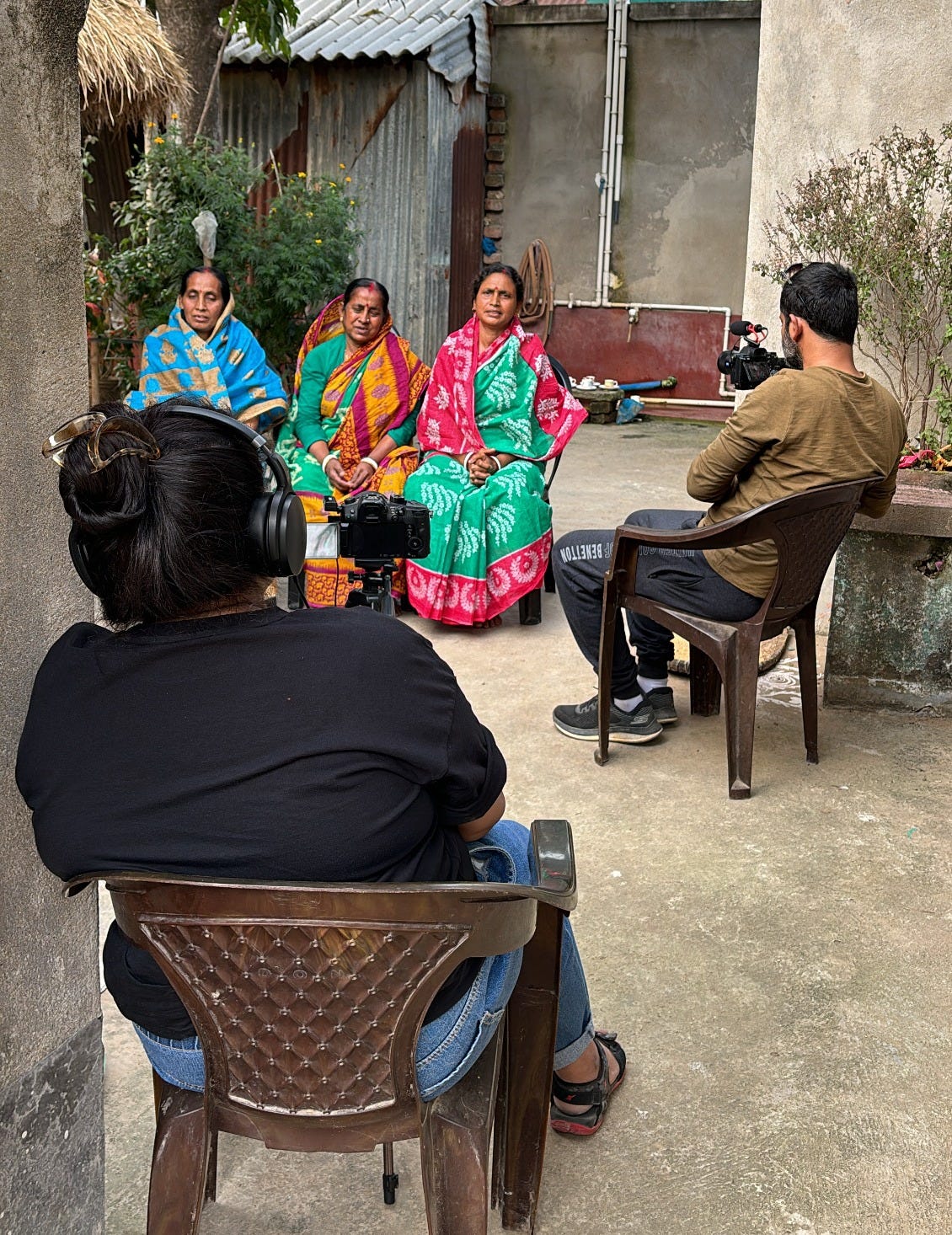In the places where stories are shaped and shared, gender lives in a folder marked “women’s issues”. Sometimes it spills out – when violence makes headlines, when policies need scrutiny, or when calendars remind us it’s time to celebrate women’s achievements. But between all these events are vast landscapes of unexamined lives and unquestioned assumptions.
At Newsworthy.Studio, we think a lot about these in-between spaces and how to disrupt the when and how we read, write, talk about gender.
The 'when' should be easy: all the time. See the world not as a ‘gender angle’ but a wide shot. Keep making it wider till your stories have a stream of fresh, new insights. These need to be continuous, consistent, not the stray ones we go looking for every once in a while on ‘women's day’.
They should ideally not come from ‘people like us’.
Truly changing ‘how’ we talk about gender is more complex. It challenges everything— our vocabulary, our comfort zones, the idioms that sit so comfortably on our tongue, our habits, and what we think of ourselves and the rest of the world. It shocks many people when they realise the most stubborn forms of sexism exist in some very elite spaces.
It can be simplified with a bird’s-eye focus on intersectionality – that much-used term (and rightly so) in academic and development circles that nudges us to see across axes of caste, class, and more.
When we think about intersectionality, we think about dignity. That when we write and talk about people, we keep dignity first, we are non-judgmental, and we see people as full human beings—not just members of LGBTQIA+ community, or Dalit and Adivasi, or any other single aspect of their identity. We see them as people who may have far more layers, complexities and experiences than we can ever imagine in the half hour we spend with them to ostensibly tell their stories.

When we do that we are more likely to examine how the levers of class, caste, race, ability, religion, age, and location are used to doubly, triply, quadruply ostracise women as they brave challenges as old as police brutality and as new as climate change and social media.
If one uses this approach to intersectionality, chances are gender will not be an opportunity, a checkbox, an afterthought. It will not be isolated, it will not be a lens only, it will be a full view. It will not be compartmentalised—examined only at certain times, in certain spaces by certain experts and left out otherwise.
Of course, no conversation about gender can happen without talking about men: how they learn to perform what is demanded of them, how it benefits and takes away from them, how seats of power are monopolised in n number of ways, and how the spaces they occupy sometimes impinges onto rights and representation of people otherwise gendered.
Among all this what disturbs us the most is gender and violence, and how it is framed, narrated and reported—specially since writing about gender is very often writing about violence. In large parts the telling of this story is still selective, clinical, irregular, bordering on grotesque and erasing the larger context of rape culture, societal roles and dignity. The vocabulary of gender-based violence, in particular, is telling. The phrase ‘crimes against women’: sounds as if gender-based violence just happens. No one engages in these crimes. Similarly, terms like ‘domestic violence’ make us believe that this systemic abuse is something private, and should be left behind closed doors. In the development sector, the language of gender is buried under words like ‘capacity building’, ‘women’s empowerment’, and ‘gender mainstreaming’, whose overuse has made them redundant.
I am guilty here as well. I remember journalist Priya Ramani writing about how the term “POSH compliance” made sexual harassment sound like a bureaucratic checklist. -Anubha
Gender needs a sharp, clear language, one that says not obscures. One that is yours, made up of your idiom, experiences, your ‘chutney scene’ (relevant only for those who have seen Mrs).
At Newsworthy.Studio we are concerned with the tale of gender and the telling of it. We are here because conversations like these don't lend themselves to tweets. We're here for the slow, messy, and stubborn work of change. And if stories help us live, as Didion suggests, then perhaps better stories can help us live better—more fully, more fairly, more freely.
This piece is a coming together of several notes, conversations, panels, drafts written in part by Akshi Chawla, Pallavi Prasad, and Anubha Bhonsle over the years.







This established practice of reporting on gender based issues is so normalised that it almost feels normal. It really needs to be changed.💪
Thank you for sharing this one. Being myself trying and learning, it gives a better direction towards 'how' can I make it gender-fluid conversation ❤️
Happy Women's Day to all of you!